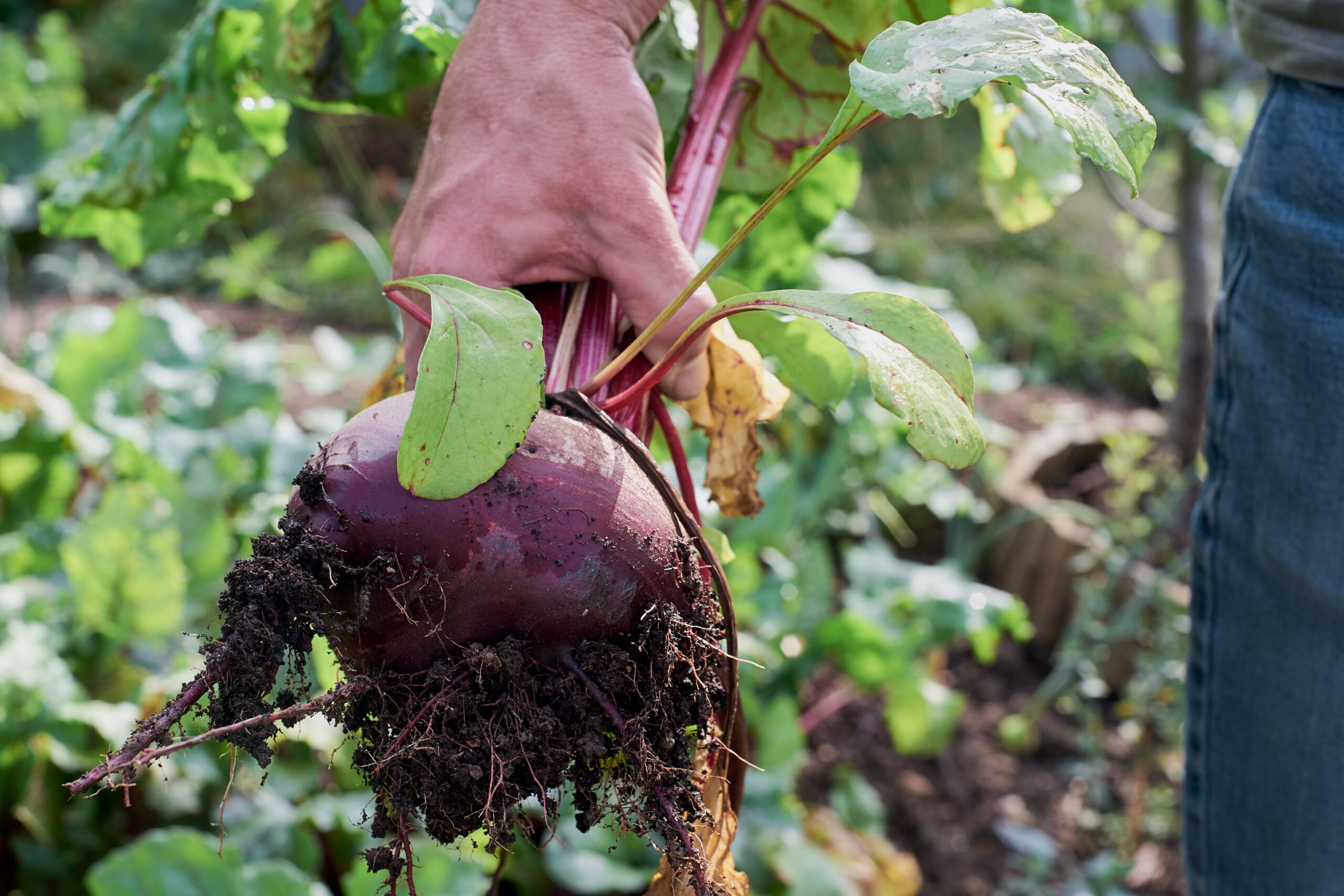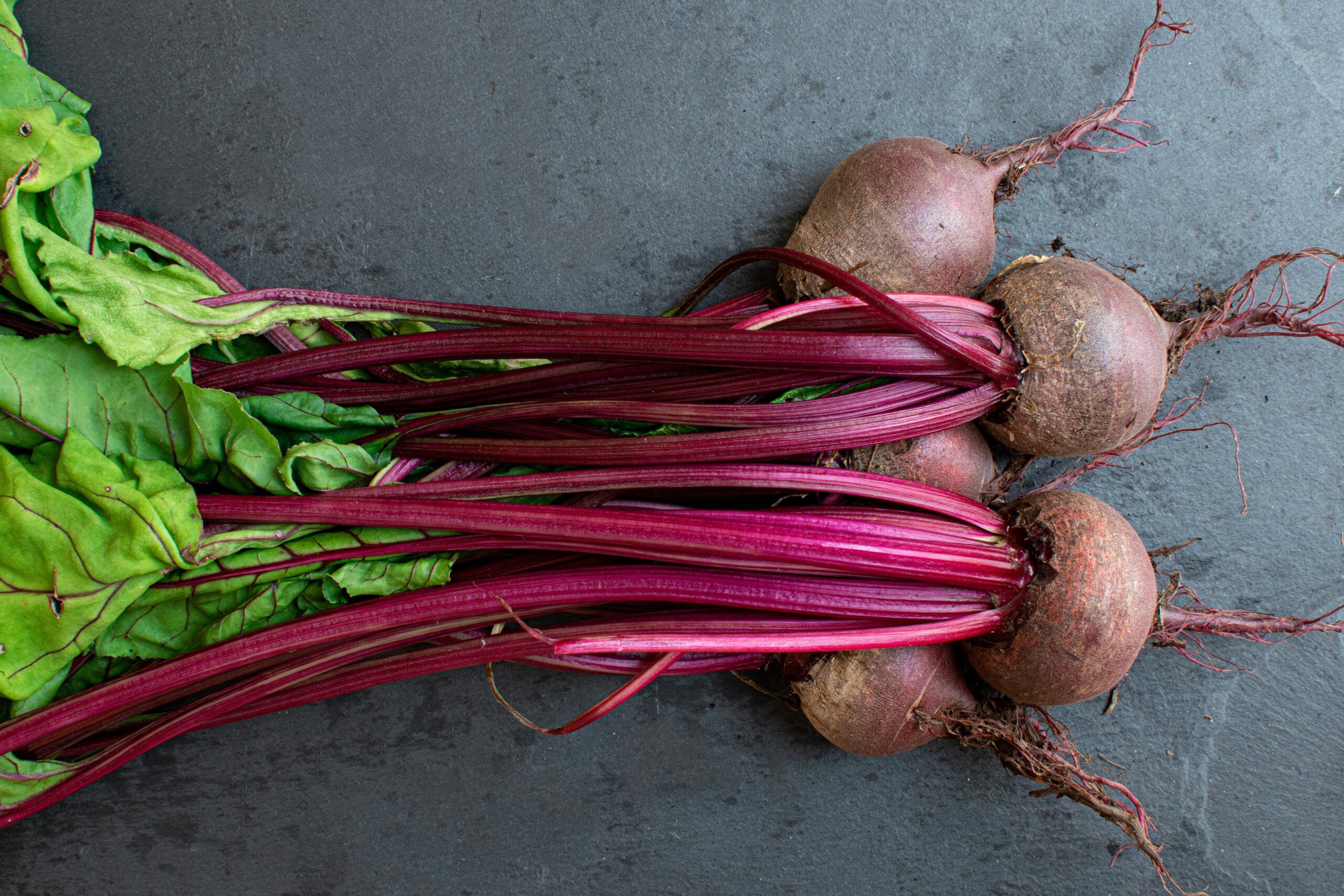Benefits of Organic Beetroot Cultivation
Organic beetroot cultivation offers numerous benefits for both the environment and the health-conscious gardener. By choosing to grow beetroots organically, you can enjoy a bountiful harvest while minimizing your impact on the ecosystem. In this article, we will explore the various advantages of organic beetroot cultivation and provide some useful tips to ensure a successful harvest.
One of the primary benefits of organic beetroot cultivation is the avoidance of harmful chemicals. Conventional farming methods often rely on synthetic pesticides and fertilizers, which can have detrimental effects on the environment and human health. By opting for organic cultivation, you eliminate the risk of chemical residues on your beetroots, making them safer to consume.
Furthermore, organic farming practices promote soil health and biodiversity. Instead of relying on synthetic fertilizers, organic farmers use natural methods such as composting and crop rotation to nourish the soil. This not only improves the quality of the soil but also encourages beneficial organisms like earthworms and microorganisms to thrive. Healthy soil leads to healthier plants, resulting in more robust and nutrient-rich beetroots.
Another advantage of organic beetroot cultivation is the preservation of water quality. Synthetic fertilizers and pesticides used in conventional farming can leach into water sources, contaminating them and posing a threat to aquatic life. Organic farming, on the other hand, emphasizes the use of natural inputs, reducing the risk of water pollution. By choosing organic cultivation methods, you contribute to the conservation of water resources and help maintain a healthy ecosystem.
In addition to environmental benefits, organic beetroot cultivation can also have positive impacts on human health. Organic beetroots are free from synthetic chemicals, making them a safer choice for consumption. Studies have shown that organic produce tends to have higher levels of certain nutrients, including antioxidants and vitamins. By growing your own organic beetroots, you can ensure that you are consuming the freshest and most nutritious produce possible.
To achieve a bountiful harvest of organic beetroots, there are a few key tips to keep in mind. Firstly, it is essential to choose the right variety of beetroot for your climate and soil conditions. Some varieties are more tolerant of heat or cold, while others thrive in specific soil types. Research the different varieties available and select the ones best suited to your growing conditions.
Proper soil preparation is also crucial for successful organic beetroot cultivation. Beetroots prefer well-drained soil with a pH level between 6.0 and 7.5. Before planting, amend the soil with organic matter such as compost or well-rotted manure to improve its fertility and structure. This will provide the necessary nutrients for healthy beetroot growth.
Regular watering is essential for beetroot plants, especially during dry periods. However, be careful not to overwater, as this can lead to rotting of the roots. Mulching around the plants can help retain moisture in the soil and suppress weed growth, reducing the need for excessive watering and manual weed control.
Lastly, be mindful of pests and diseases that can affect beetroot plants. Organic pest control methods such as companion planting, using insect-repelling plants, and handpicking pests can help manage infestations without resorting to chemical pesticides. Regularly inspect your plants for signs of disease or pest damage and take appropriate action promptly.
In conclusion, organic beetroot cultivation offers numerous benefits, both for the environment and for personal health. By avoiding harmful chemicals, promoting soil health, and preserving water quality, organic farming methods contribute to a sustainable and eco-friendly approach to food production. By following the tips provided, you can ensure a bountiful harvest of delicious and nutritious organic beetroots.
Essential Tips for Successful Organic Beetroot Cultivation

Organic beetroot cultivation can be a rewarding and fulfilling endeavor for any gardener. Not only does it provide a bountiful harvest of delicious and nutritious root vegetables, but it also allows you to grow your produce without the use of harmful chemicals. However, successful organic beetroot cultivation requires careful planning and attention to detail. In this article, we will provide you with essential tips to ensure a bountiful harvest of organic beetroot.
First and foremost, it is crucial to choose the right variety of beetroot for your organic garden. There are numerous varieties available, each with its unique characteristics and flavor profiles. Some popular organic beetroot varieties include Detroit Dark Red, Chioggia, and Golden Beet. Consider factors such as taste preference, growing conditions, and disease resistance when selecting the variety that best suits your needs.
Once you have chosen the right variety, it is time to prepare the soil for planting. Organic beetroot thrives in well-drained, fertile soil with a pH level between 6.0 and 7.5. Before planting, amend the soil with organic matter such as compost or well-rotted manure to improve its structure and nutrient content. Additionally, ensure that the soil is free from weeds and debris, as they can hinder the growth of your beetroot plants.
When it comes to planting, timing is crucial. Beetroot is a cool-season crop that prefers temperatures between 50°F and 75°F. It is best to sow beetroot seeds directly into the garden bed, as they do not transplant well. Plant the seeds about half an inch deep and one inch apart, leaving around 12 inches between rows. To promote germination, keep the soil consistently moist but not waterlogged.
As your beetroot plants begin to grow, it is essential to provide them with proper care and maintenance. Regularly water your plants, ensuring that the soil remains evenly moist. However, be cautious not to overwater, as this can lead to rotting of the roots. Mulching around the plants can help retain moisture and suppress weed growth.
To promote healthy growth and prevent nutrient deficiencies, it is advisable to fertilize your beetroot plants regularly. Organic fertilizers such as compost tea or fish emulsion are excellent choices for providing the necessary nutrients without the use of synthetic chemicals. Apply the fertilizer according to the package instructions, taking care not to over-fertilize, as this can lead to excessive leaf growth at the expense of root development.
Pest and disease management is another crucial aspect of successful organic beetroot cultivation. Regularly inspect your plants for signs of pests such as aphids, flea beetles, or leaf miners. If detected, consider using organic pest control methods such as insecticidal soap or neem oil. Additionally, practicing crop rotation and maintaining proper spacing between plants can help prevent the spread of diseases such as leaf spot or powdery mildew.
Harvesting your organic beetroot at the right time is essential for optimal flavor and texture. Most beetroot varieties are ready for harvest around 60 to 70 days after planting. The roots should be firm and about the size of a golf ball. To harvest, gently loosen the soil around the base of the plant and carefully lift the roots out of the ground. Remember to remove the leaves, leaving about an inch of the stem intact to prevent bleeding.
In conclusion, successful organic beetroot cultivation requires careful planning and attention to detail. By selecting the right variety, preparing the soil, providing proper care and maintenance, managing pests and diseases, and harvesting at the right time, you can ensure a bountiful harvest of delicious and nutritious organic beetroot. So roll up your sleeves, get your hands dirty, and enjoy the rewards of growing your own organic beetroot.
Maximizing Yield in Organic Beetroot Cultivation
Organic beetroot cultivation can be a rewarding endeavor for any gardener or farmer. Not only does it provide a bountiful harvest of delicious and nutritious root vegetables, but it also allows for a more sustainable and environmentally friendly approach to farming. However, maximizing yield in organic beetroot cultivation requires careful planning and implementation of certain techniques. In this article, we will explore some tips and strategies to help you achieve bountiful harvests in your organic beetroot cultivation.
One of the first steps in maximizing yield is selecting the right variety of beetroot for your specific growing conditions. Different varieties have different growth habits, disease resistance, and maturation times. It is important to choose a variety that is well-suited to your climate and soil type. Additionally, selecting disease-resistant varieties can help prevent common beetroot diseases and ensure a healthy crop.
Once you have selected the appropriate variety, it is time to prepare the soil for planting. Organic beetroot cultivation requires fertile, well-drained soil with a pH level between 6.0 and 7.5. Before planting, it is recommended to amend the soil with organic matter such as compost or well-rotted manure. This will improve soil structure, fertility, and water-holding capacity, ultimately promoting healthy root development.
When it comes to planting, timing is crucial. Beetroot seeds can be sown directly into the ground once the soil temperature reaches around 50°F (10°C). It is important to avoid planting too early, as cold soil can lead to poor germination and stunted growth. On the other hand, planting too late can result in reduced yields due to the onset of hot weather. Aim to plant beetroot seeds about 1 inch deep and 2-3 inches apart, with rows spaced around 12-18 inches apart.
Proper irrigation is essential for maximizing yield in organic beetroot cultivation. Beets require consistent moisture throughout their growing season, but overwatering can lead to rot and disease. It is recommended to water deeply and infrequently, allowing the soil to dry out slightly between waterings. Mulching around the plants can help conserve moisture and suppress weed growth, further promoting healthy beetroot growth.
Regular weeding is another important aspect of organic beetroot cultivation. Weeds compete with beets for nutrients, water, and sunlight, ultimately reducing yields. Hand-weeding or using a hoe to remove weeds is the most effective method in organic cultivation. Be careful not to disturb the shallow root system of the beets while weeding.
To further maximize yield, it is beneficial to provide adequate nutrition to your beetroot plants. Organic fertilizers, such as compost or well-rotted manure, can be applied before planting to provide a slow-release source of nutrients. Additionally, side-dressing with compost or a balanced organic fertilizer during the growing season can help ensure optimal growth and development.
Lastly, pest and disease management is crucial in organic beetroot cultivation. Regular monitoring for pests such as aphids, flea beetles, and leaf miners is important to catch infestations early. Natural predators, such as ladybugs and lacewings, can help control pest populations. For disease prevention, crop rotation, proper sanitation, and selecting disease-resistant varieties are key strategies.
In conclusion, maximizing yield in organic beetroot cultivation requires careful planning and implementation of various techniques. Selecting the right variety, preparing the soil, proper irrigation, regular weeding, providing adequate nutrition, and managing pests and diseases are all important factors to consider. By following these tips and strategies, you can ensure bountiful harvests of delicious and nutritious organic beetroot.

